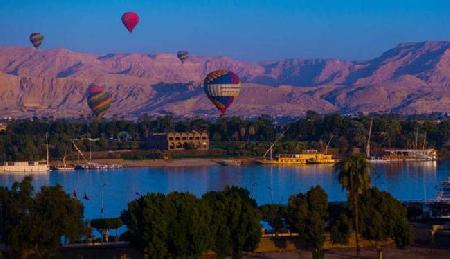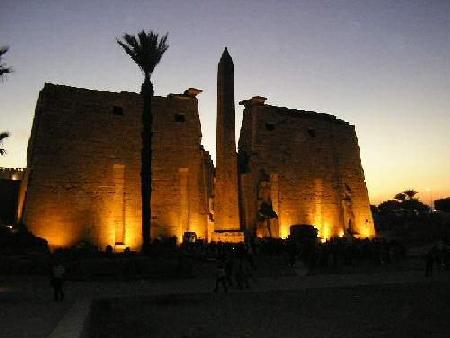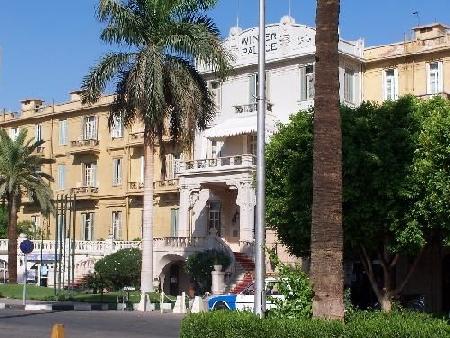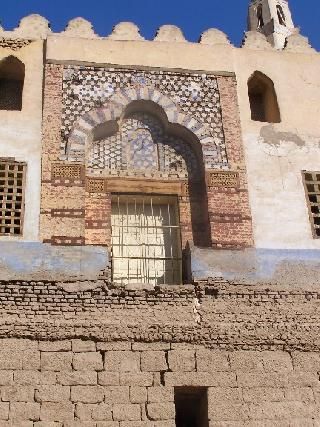What was once a small village in Qena province in Upper Egypt is now a great independent and prosperous city of approx. 300,000 inhabitants. The visitor must know that what we call now Luxor is indeed three separate areas: the city itself, the village of Karnak, a few kilometers north-east, and monuments and ancient necropolis of Thebes, on the west bank of the Nile. Thanks to tourism and large investments from the Administration, Luxor is rapidly becoming the world's largest open museum.

Luxor is one of the most attractive cities in Egypt, it contains the largest and most unique collection of ancient Egyptian temples. It lies some 671 km south of Cairo. It is divided into two banks: the Eastern bank which contains the Karnak and the Luxor temples, and the western bank which contains: the Valley of the Kings, the Valley of the Queens, the Valley of the Nobles as well as funerary temples like that of Hatshepsut. The eastern bank of Luxor still retains a certain charm of the provincial and rural city. The city, full of hotels, bars and restaurants, can be easily toured on foot moving in broad avenues and narrow alleys with adobe houses and a sense of rural air.The tourist will enjoy, in the heart of the city, the elegant view of the temple of Luxor -specially by night- which is a masterpiece of architecture with its courtyards and shrines dedicated to the Theban gods. Downstream, there stands the impressive complex of the temples of Karnak, built and never finished from more than 2000 years.

In addition to the monuments, there are two excellent museums: the Museum of Luxor, which contains a fascinating collection of objects discovered in this area, and the Museum of mummification, which displays human and animal mummies and shows how the ancient Egyptians perfected the process of embalming.
History of Luxor
Luxor area was inhabited at least six thousand years ago, although it did not reach its peak until the New Empire (1550-1069 BC). After the collapse of the centralized power system at the end of the Old Empire, Egypt was fragmented into a series of local centers of power. During the chaos of the first period intermediate (2181-2055 BC), Thebes, a small town in the south whose name was Uaset, was strengthened enough to attain fluency in the capital of north Heracleopolis, thanks to the effective control of Mentuhotep II (2055 -- 2004 BC) during the XI dynasty.

After reuniting the country and relocating the capital to Thebes, this pharaoh undertook a series of construction works among which are a local temple dedicated to the Theban god, Amon at Karnak, and his own funerary temple at Deir el-Bahri. Although pharaohs of dynasty XII relocated the capital to the North, Thebes remained the capital of the South (Upper Egypt) and never lost its importance of being a ceremonial capital besides Memphis which was the main administrative center. After the second intermediate period (1650-1550 BC), Thebes regained its unifying power. Its family of rulers expelled the Hyksos northward, settling the foundation for expansion of Egypt and for the New Empire (1550-1069 BC). The glory of this great city of many thousands of inhabitants lasted five hundred years, during which the major part of its great monuments was built. After the Reign of Ramses III, Egypt declined and with it also the importance of Luxor. The decline of the power of the pharaohs was evident in the gradual erosion of the city. Primitive Christian monasteries and churches were erected on many of the Pharaonic ruins of sanctuaries. Visitors can still see the crosses engraved on the walls of the temples and signs left by monks and priests to try to erase the Pharaonic reliefs. Then, the Arabs came to Egypt, and they called the old Thebas, Luxor, or the city of palaces, as they thought the grand Pharaonic temples were indeed the Pharaohs' palaces. Like the major part of Upper Egypt, Luxor was declining until the arrival of Napoleon in 1798 and the publication of the book Description de I'Egypte written by experts, awakened the interest in Egypt. In Europe, the exhibition of mummies, jewels and other fabulous funerary objects from the Theban tombs attracted more adventurers and tourists. In 1869, when Thomas Cook led the first group of tourists to Egypt, Luxor was one of the first destinations. Mass touristic visits were coming to Luxor and the city regained its place on the world map.
Names of Luxor
Luxor used to be the 4th Nome of Upper Egypt in the province of Qena. The ancient Egyptian name of Luxor was (wast) which means the symbol of rule and authority. It was also known as (southern Iwn) or Iwn Smc, as the northern Iwn was Heliopolis. The Greeks called it Thebes and later on called it Diospolis, "City of Zeus" (Zeus being the god whom the Greeks identified with Amun). The Greeks surnamed the city Megale, "the Great", to differentiate the city from numerous others named Diospolis. The Romans then rendered the name Diospolis Magna. The city was called by the famous Greek poet (Homer) “the city of hundred gates”. When the Arabs came to Egypt. they called the city (Alqusur) which means city of palaces and from it, the modern name Luxor was derived.
Excursions in Luxor

One of the best activities you can do in Luxor late in the afternoon is taking a relaxing excursion in Faluca. These boats are sailing in the river all day long. You can take any of the banks under the Corniche or near the ferry pier. A nice trip back is the Banana River to the island. This islet, dotted with palm trees, is about 5 km from Luxor and the trip lasts for two to three hours. You should calculate the time so you can be back to contemplate the sunset from the boat.
There are several companies offering balloon flights in the early morning on the west bank. When the sky is clear, the panorama of monuments and desert mountains is impressive. Due to the changing winds, the trip can be canceled at any time. The price includes a breakfast with champagne and traditional dances. They are normally reserved through the hotel or travel agency, but can be done directly also.
Tourists can book excursions on donkey, horse or camel to visit the monuments of the west bank or simply to enjoy the breathtaking scenery of the desert. To see the monuments, it is advisable to wake up early and to make the reservation from the hotel. You can also book the excursion in site. To enjoy the desert landscape on the back of a camel, the best time is at sunset.
Hotels and travel agencies offer guided excursions for Luxor Temple, Karnak Temple, Luxor Museum, the Valley of the Kings, the Valley of the Queens, the Valley of the Nobels, the Ramesseum, Medinet Habu Temple, the Temple of Hatshepsut, Dendera, Esna, Abydos, Aswan as well as Hurghada.
Festivals and Celebrations in Luxor

